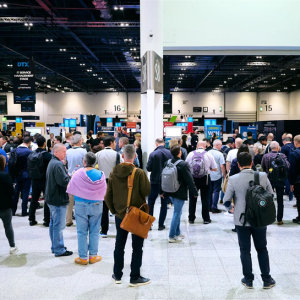
At its core, the hybrid cloud is a simple proposition. It offers the opportunity to combine the elasticity, scale, and convenience of the public cloud with the assurance, security, and guaranteed performance of on-premise infrastructure. Designed and managed well, the experience for all who interact with it – from architects to developers to in-house practitioners and end users – should be seamless.
That is the promise. Dig a little deeper and there’s plenty more to consider. For example, a hybrid cloud solution ought to be a combination of on-premise and more than one large public cloud provider. In other words, hybrid is where private cloud meets multi-cloud. Moreover, selecting which workloads – or to be more precise, which elements of which workloads – to place in the public and private domain is key to performant and cost-effective delivery. Lift and shift existing applications and the result is likely to be disappointing.

Those were the views of two attendees at a recent Tech Monitor event called ‘Streamlining your business with hybrid cloud’. Convened in partnership with Lenovo and AMD, the mid-September roundtable brought together senior IT and business decision-makers from a range of industries to discuss the organisational benefits of hybrid.
The event started with attendees identifying where they were on their hybrid cloud journey based on a simple scale running from 0 (yet to start) to 10 (fully hybrid). The majority of those present represented organisations with relatively mature hybrid cloud deployment (6 and above). Some were still in the early stages of the journey (2 to 4). At least one still sought a business case. “What’s the rationale for cloud?” he asked.
Attendees also shared their top concerns. The challenges cited included cost control, ensuring data residency, filling the skills gap, and managing legacy systems.
Setting the scene from a vendor perspective, Tikiri Wanduragala, EMEA Senior Consultant, Lenovo Infrastructure Solutions said that five themes emerge every time he speaks to customers – and all five bring you back to the hybrid cloud. Those themes, Wanduragala said, are hybrid working patterns post-Covid, environmental sustainability, artificial intelligence (AI), cyber security (“a monster that continues to morph”), and edge computing. He suggested the last of these could prove the biggest growth area given the rising volume of data that “we just can’t move”.
The conversation turned to environmental sustainability and the role and responsibilities of the IT function to help deliver on net-zero targets. Lenovo’s Wanduragala suggested that while sustainability was just an “add-on” three years ago, it is now a business imperative. “It’s not a C-level discussion, it’s a B-level discussion. It’s at board level”.
Has that mission trickled down in the form of direct mandates for IT leaders? Judging by our straw poll of attendees, it has and it hasn’t. A handful of those present said they were judged on sustainability, as well as wider ESG (environmental, social and governance) issues. The majority, however, had no such direct obligations. “We’re trying to get it on the agenda,” said one IT director present, suggesting that pressure may have to come from the business functions rather than top down.
And while a number of attendees agreed that sustainability had made its way onto most procurement proposals as a criterion for selection, uniform measures to evaluate environmental impact remain elusive. Without standards, comparative assessments are impossible. Without standards, greenwashing remains a danger.
Finally, back to the overarching case. Namely, when it comes to the hybrid cloud which workloads belong where? Are there some that are better suited for cloud and others for on-premise? Taking AI deployment as an example, most agreed that the public cloud was the perfect environment for experimentation. However, on-premise might prove a more suitable home “when things get serious,” not least given the sensitivity of the data and intellectual property likely to be at the heart of an AI-driven application.
More broadly, others cautioned that cloud users need to be wary of costs associated with accessing and retrieving data. That’s one of the reasons why a multi-cloud strategy can prove useful – “It keeps the hyperscalers honest,” argued one attendee. Organisations should be wary of potential lock-in, too, or else their cloud may morph into ‘Hotel California’ – “You can check out any time you like but you can never leave.”
Building on these themes, Lee-Martin King, North EMEA Commercial Sales Director, AMD suggested that it all comes down to planning. Too many organisations have had their “fingers burnt”, he said, simply lifting and shifting existing workloads. “Whether its sovereignty of data or another reason, not everything suits going into the cloud.”
What is clear is that the choice is not binary, even if some imagined it might soon be so. It is not an either-or between cloud and on-premise. Wanduragala recalls working for a former employer who asserted that the advent of the cloud meant “the data centre was dead. Luckily, most of us didn’t take that seriously.”
‘Streamlining your business with hybrid cloud’ – a Tech Monitor roundtable discussion in association with Lenovo and AMD – took place on 20 September 2023 at Andaz London Liverpool Street.







